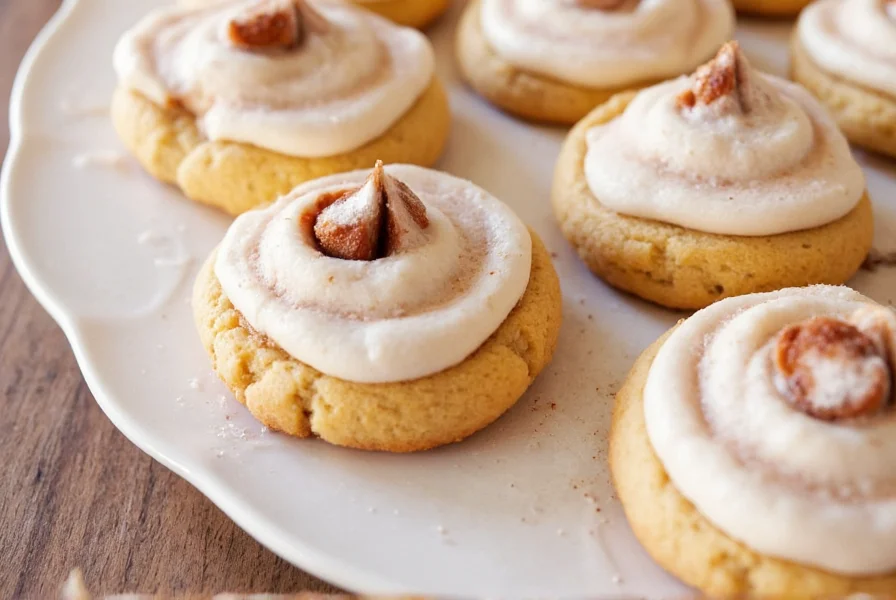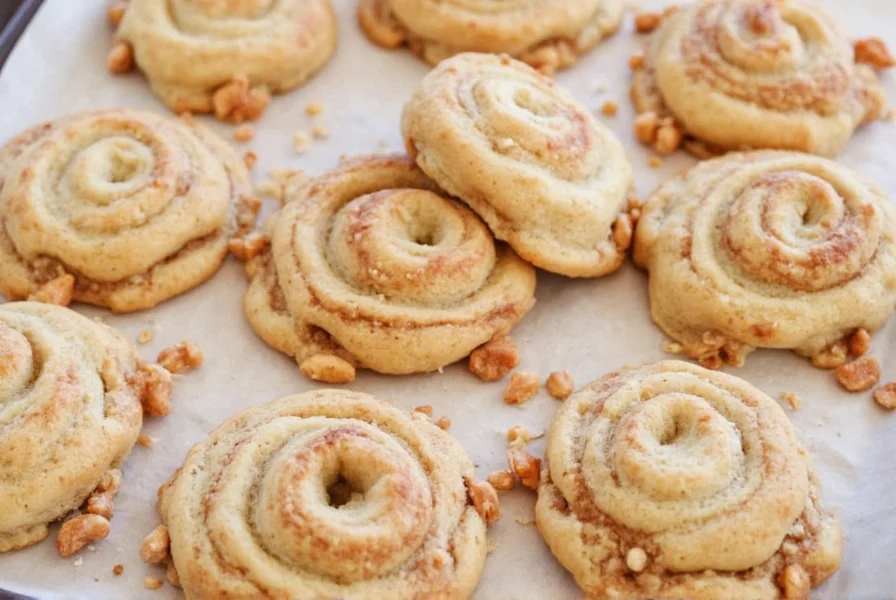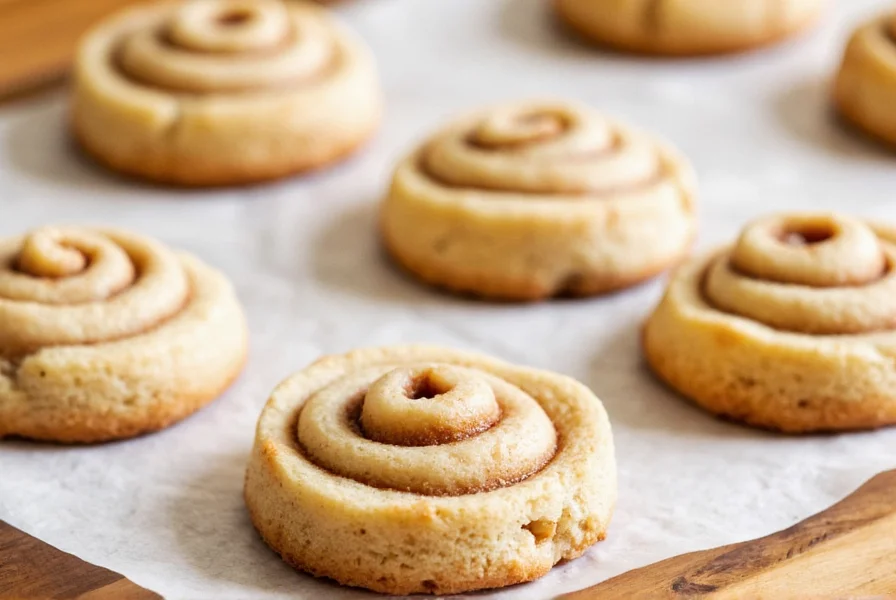These delectable hybrids have gained popularity for their perfect balance of cookie convenience and cinnamon roll indulgence. Unlike traditional cookies, cinnamon roll cookies feature a distinctive spiral pattern created by rolling cinnamon-sugar filling inside the dough before slicing and baking. The result is a treat that offers the chewy texture of a cookie with the gooey center of a cinnamon roll.
The Essential Components of Perfect Cinnamon Roll Cookies
Creating exceptional cinnamon roll cookies requires attention to three critical elements: the cookie base, the cinnamon filling, and the finishing frosting. The cookie dough must be rich enough to stand up to the filling without becoming soggy, yet soft enough to maintain that desirable chewy texture. Many bakers find that using a combination of butter and cream cheese in the dough creates the ideal foundation.
Classic Cinnamon Roll Cookies Recipe
This tested recipe yields approximately 24 cookies with the perfect balance of spice, sweetness, and texture. The key to success lies in properly chilling the dough before slicing, which prevents the filling from leaking during baking.
| Ingredient | Measurement | Preparation Notes |
|---|---|---|
| All-purpose flour | 2 ½ cups | Sifted, measured properly |
| Unsalted butter | 1 cup (2 sticks) | Room temperature |
| Cream cheese | 4 oz | Full-fat, room temperature |
| Granulated sugar | ¾ cup | Plus ½ cup for filling |
| Brown sugar | ½ cup | Packed |
| Egg | 1 large | Room temperature |
| Cinnamon | 2 tbsp | Plus 1 tsp for filling |
| Vanilla extract | 2 tsp |
Step-by-Step Baking Instructions
- Prepare the dough: Cream butter, cream cheese, and sugars until light and fluffy (about 3-4 minutes)
- Add egg and vanilla, mixing until fully incorporated
- Gradually add flour and cinnamon, mixing until just combined
- Roll dough into a 12x10 inch rectangle between parchment paper
- Spread softened butter over dough, then sprinkle with cinnamon-sugar mixture
- Carefully roll dough into a tight log, chilling for 30 minutes
- Slice into ½ inch pieces and place on parchment-lined baking sheets
- Bake at 350°F for 12-15 minutes until golden at edges
- Cool completely before applying cream cheese frosting
Proven Baking Techniques for Optimal Results
Professional bakers emphasize several critical techniques when making cinnamon roll cookies. First, maintaining proper dough temperature is essential—too warm and the filling leaks, too cold and the dough cracks when slicing. The ideal consistency allows clean slicing without crumbling.
Another crucial factor is the cinnamon-sugar ratio. Many home bakers underestimate how much filling these cookies need to deliver that authentic cinnamon roll experience. A generous ½ cup of sugar combined with 1-2 tablespoons of cinnamon creates the perfect balance without overwhelming sweetness.

Common Mistakes to Avoid
Even experienced bakers encounter challenges with cinnamon roll cookies. The most frequent issue is filling leakage during baking, which occurs when the dough isn't properly chilled or the log isn't sealed tightly. To prevent this, ensure the dough chills for at least 30 minutes before slicing, and pinch the seam of the rolled dough firmly.
Another common problem is dry, crumbly cookies, which typically results from overbaking or excessive flour. These cookies should remain soft and chewy in the center. For best results, remove them from the oven when the edges are golden but the centers still appear slightly underdone—they'll continue cooking on the baking sheet.
Delicious Variations to Try
Once you've mastered the basic recipe, experiment with these popular variations:
- Nutty twist: Add ¼ cup chopped pecans or walnuts to the filling
- Apple cinnamon: Incorporate ⅓ cup finely diced apple into the filling
- Streusel topping: Sprinkle brown sugar streusel on top before baking
- Gluten-free version: Substitute with quality gluten-free flour blend

Storage and Serving Recommendations
For optimal freshness, store cinnamon roll cookies in an airtight container at room temperature for up to 3 days. The cream cheese frosting makes refrigeration necessary after this point, though the texture may become slightly firmer. To restore that fresh-baked softness, microwave individual cookies for 5-10 seconds before serving.
These cookies pair beautifully with coffee, tea, or cold milk. For special occasions, serve them slightly warmed with a scoop of vanilla ice cream for an irresistible à la mode dessert. The contrast between the warm cookie and cold ice cream creates a delightful sensory experience that elevates this already delicious treat.
Frequently Asked Questions
How do you prevent cinnamon roll cookies from going flat?
Chill the rolled dough log thoroughly before slicing (at least 30 minutes), and ensure your baking sheets are cool between batches. Using the correct ratio of leavening agents is crucial—too much baking soda will cause excessive spreading. For best results, use a combination of baking powder and a small amount of baking soda.
Can you freeze cinnamon roll cookie dough?
Yes, you can freeze the rolled dough log for up to 3 months. Wrap tightly in plastic wrap followed by aluminum foil. When ready to bake, slice the frozen log with a sharp knife (no need to thaw) and add 1-2 minutes to the baking time. This method works particularly well for preparing cookies ahead for holidays or special occasions.
Why are my cinnamon roll cookies dry?
Dry cookies typically result from overbaking, excessive flour, or insufficient fat content. Measure flour properly using the spoon-and-level method rather than scooping directly from the bag. Remove cookies from the oven when centers still appear slightly underdone, as they continue cooking on the baking sheet. Adding an extra tablespoon of cream cheese to the dough can also enhance moisture retention.
How do you make the cream cheese frosting for cinnamon roll cookies?
Combine 4 oz softened cream cheese, ¼ cup softened butter, 1 ½ cups powdered sugar, 1 tsp vanilla extract, and a pinch of salt. Beat until smooth and creamy, adding 1-2 tablespoons of milk if needed to reach desired consistency. Apply to completely cooled cookies for best results—frosting warm cookies will cause the frosting to melt and slide off.
What's the difference between cinnamon roll cookies and regular cinnamon rolls?
Cinnamon roll cookies use cookie dough as the base rather than yeast-raised dough, resulting in a chewier texture with crisp edges. They bake much faster (12-15 minutes versus 25-30 minutes for traditional rolls) and don't require rising time. The spiral technique is similar, but the cookie version creates individual portions rather than a single rolled log that's sliced after baking.











 浙公网安备
33010002000092号
浙公网安备
33010002000092号 浙B2-20120091-4
浙B2-20120091-4